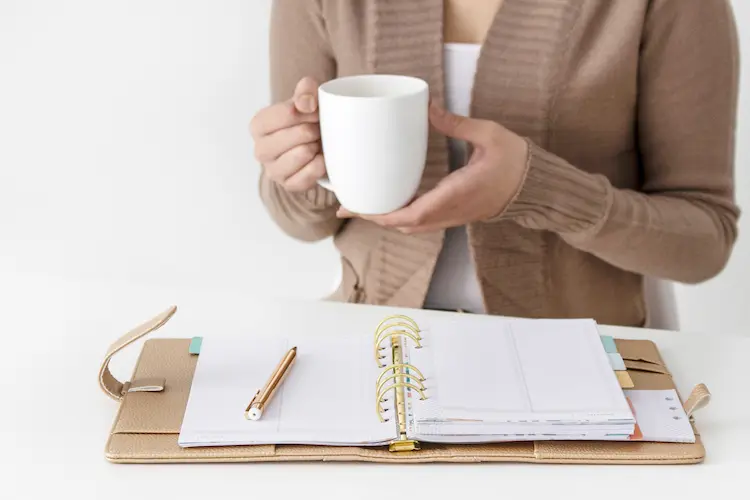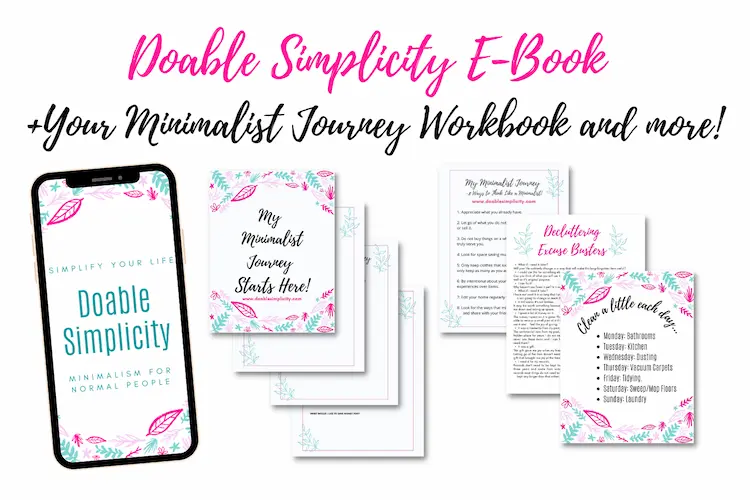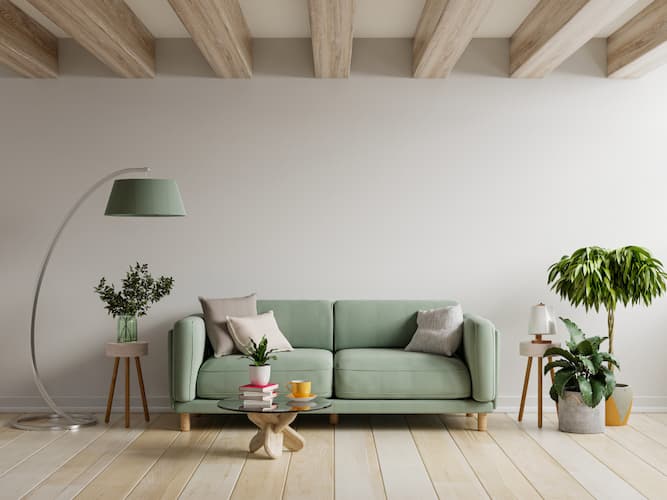9 Tips for Designing a Minimalist Workspace That Promotes Happy Productivity!
This is a Guest Post by Sugandha Chawla
Are you ready to transform your home office into a serene and productive space? Creating a minimalist workspace can enhance your focus, creativity, and overall well-being.
Whether you work remotely or simply need a designated area for tasks and projects, optimizing your home office for minimalism can bring clarity and calm to your workday. Now, let’s see nine practical steps to help you achieve that.
1. Start with Decluttering Your Minimalist Workspace
First things first—you need to declutter your workspace.
Remove unnecessary items that distract you or clutter your desk. Keep only essential items within reach, such as your computer, notebooks, and a few select stationery items.
The wires should also be minimal, and consider using Bluetooth connections, wireless charging, and a cable catch to reduce the number of wires cluttering your workstation.
A tidy workspace promotes mental clarity and enhances focus on your tasks, , and using a space-saving iPad stand for desk and kitchen counters can help maintain this organization while keeping your tablet accessible, creating a conducive environment for productivity.

2. Optimize Your Digital Workspace
Your workspace comprises your physical items as well as the digital ones.
When optimizing your digital workspace, evaluate your array of tools and software. Ask yourself: Do I truly require this device or application?
Occasionally, sort through your digital files, emails, and archives to remove redundant or obsolete items. You may also want to empty iCloud storage if you discover it is filled with old files you no longer need.
An organized digital environment promotes productivity and facilitates seamless access to critical resources.
3. Choose Functional Furniture for Your Minimalist Workspace
Now that you’ve gotten rid of everything you don’t need it’s time to focus on what you do need.
Firstly, select furniture that serves a purpose and complements your minimalist style. Opt for a sleek and ergonomic desk that fits well in your space. If you work for long hours, a simple chair with good back support is essential. Avoid bulky furniture and prioritize functionality.
Aim for clean lines and neutral colors to maintain a minimalist aesthetic.

4. Keep It Simple with Decor
When decorating your minimalist workspace, less is more.
Choose a few meaningful decorations that inspire you without overwhelming the space. A potted plant can add a touch of nature and freshness. Plus, nature can also enhance serenity, mood, and a sense of calmness.
Incorporate motivational quotes or artwork that resonates with your work philosophy. Maintain a cohesive color palette to create visual harmony.
5. Maximize Natural Light
Did you know that natural light can boost productivity and energy levels? So, you’ll want to position your desk near a window to maximize natural light. Apart from boosting mood and productivity, it also reduces eye strain.
But let’s face it; not every workstation will have direct access to the sun. If natural light is limited, opt for soft, ambient lighting with minimalist desk lamps or overhead lights. But avoid harsh lighting that can cause glare and discomfort.

6. Organize Efficiently
To keep everything in your workspace prim and proper, invest in practical organizers and storage solutions to keep your workspace tidy. Use trays or bins for paperwork and supplies.
If you wish to display books and essentials, consider using a wall-mounted or floating shelf. Don’t forget to keep cables and cords hidden or neatly managed to reduce visual clutter. Of course, they can be quite unsightly while contributing to stress.
An organized workspace minimizes distractions and helps streamline your workflow.
7. Create a Zen Zone
Designate a corner for relaxation and mindfulness within your workspace. It’s also good to have a place where you can take short breaks or practice deep breathing exercises, so consider adding a comfortable chair or cushion.
Incorporate elements like a small fountain or essential oil diffuser for added tranquility. A zen zone within your minimalist office promotes mental clarity and reduces stress.

8. Prioritize Functionality
In a minimalist workspace, functionality is key. If there’s anything that can serve two purposes, consider going for it.
For example, there are versatile furniture pieces that serve multiple purposes, such as a desk with built-in storage or a rolling cart for mobility. This helps you keep essential items within arm’s reach to minimize distractions.
Eliminate unnecessary items and focus on what enhances your work experience.
9. Practice Mindful Work Habits in Your Minimalist Workspace
Lastly, cultivate mindful work habits to fully embrace your minimalist workspace. Stay present and focused on one task at a time. Take regular breaks to stretch or move around. And finally, let your simplified and serene workspace inspire you to be more mindful and intentional in your work.
Designing a minimalist workspace is not just about aesthetics—it’s about creating an environment that supports your productivity and well-being.
By implementing these practical tips, you can transform your home office into a space that nurtures creativity, minimizes distractions, and enhances your overall work experience.
Embrace minimalism, simplify your surroundings, and enjoy a more serene and productive work life.
Do You Want to Start Enjoying the Minimalist Lifestyle?
If you want the minimalist lifestyle to improve more than just your workspace you have come to the right place! I have written a special book just for you!
In Doable Simplicity (minimalism for normal people) I have included everything you need to know to get started! The practical action steps I share in the book will help you simplify your home, your chores, and your schedule so you can start going for your biggest goals, the ones you have just called “dreams” until now!








